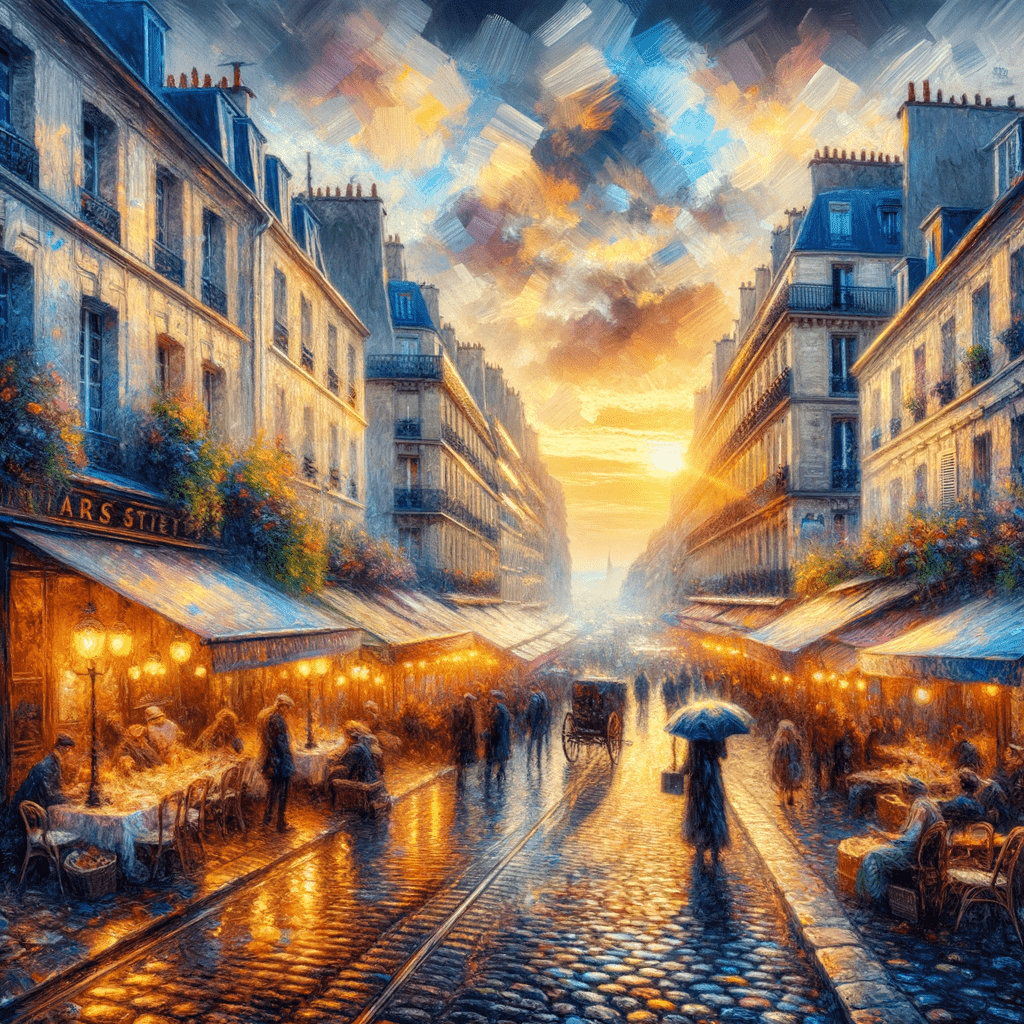A guide to the painting techniques used by the impressionists that revolutionized the approach to painting.
Impressionism was an artistic movement that radically changed the way artists saw and represented the world. Born in France at the end of the 19th century, this movement introduced new techniques and approaches that influenced generations of artists. In this article, we will explore six Impressionist techniques that every artist should try to enrich their repertoire and better understand this revolutionary style.
1. Short and Visible Brushstrokes
One of the distinctive features of Impressionism is the use of short, visible brushstrokes. This approach allows for capturing light and movement in a more dynamic and spontaneous way.
Claude Monet is famous for his quick brushstrokes that create an effect of vibration and luminosity.
Vincent van Gogh, although post-impressionist, adopted this technique to bring his landscapes and portraits to life.
Trying this technique can help artists break free from precision and focus more on the overall impression of the scene.
2. Use of Pure Color
The Impressionists often avoided mixing colors on the palette, preferring to apply pure colors directly onto the canvas. This method creates a vibrant and luminous effect.
Pierre-Auguste Renoir used pure colors to capture natural light and shadows more realistically.
Camille Pissarro experimented with complementary colors to create vibrant contrasts.
Using pure colors can help artists explore new color combinations and make their works more vibrant.
3. En Plein Air
Paint outdoors, or “en plein air,” is a technique that the Impressionists adopted to capture the natural light and atmosphere of the moment.
Claude Monet often painted outdoors to capture the variations of light throughout the day.
Alfred Sisley was known for his en plein air landscapes that reflected atmospheric conditions.
Painting outdoors can help artists develop a deeper understanding of light and color.
4. Color Gradations and Transitions
The Impressionists were masters at creating delicate shades and color transitions to represent light and shadow.
Edgar Degas used subtle shading to give depth and realism to his portraits and ballet scenes.
Berthe Morisot was skilled at creating smooth color transitions in her interior paintings and portraits.
Experimenting with color gradients and transitions can enhance an artist’s ability to depict light and shadow more realistically.
5. Asymmetric Compositions
The Impressionists often broke away from traditional symmetrical compositions, favoring more asymmetrical and dynamic arrangements.
Edgar Degas was known for his asymmetrical compositions that captured spontaneous and natural moments.
Mary Cassatt used asymmetrical compositions to give her portraits a sense of intimacy and immediacy.
Experimenting with asymmetrical compositions can help artists create more dynamic and interesting works.
6. Capturing Ephemeral Moments
One of the primary ambitions of the Impressionists was to capture fleeting and ephemeral moments, such as changing light or a momentary expression.
Claude Monet sought to capture the effect of light on the water at specific times of the day.
Edgar Degas was interested in capturing fleeting movements and natural poses in his paintings of ballerinas.
Focusing on ephemeral moments can help artists develop a sensitivity to details and create works that capture the essence of the moment.
Conclusion
Impressionist techniques have revolutionized the art world and continue to influence contemporary artists.
Trying these six techniques can help artists expand their repertoire and develop a deeper understanding of light, color, and composition.
Whether you are an experienced artist or a beginner, incorporating these techniques into your work can lead to new discoveries and greater artistic expressiveness.




